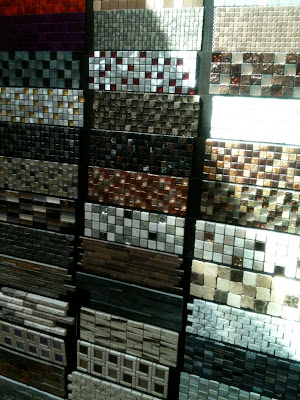Magadi Magadi,
Like every time when I'm in Harare I have to visit the National Gallery of Zimbabwe (NGZ) at least once! This time I was really impressed with all the improvements in all the areas of the museum. But most of all, I was impressed with the really great exhibition on display.
It was a photograph-exposition with photographs from different southern african photographers from the 1950's to present time. Most of them were portraits, mostly in black and white. The pictures show the process of how the photographers as newly independent citizens percieve the new and modern world they live in.
The show was separated in three different time-eras, so the viewer could really see the progress not only in technique, but also how people percieved themselves differently and started to find their own identities.
Here are my two favorite photographs of the 1950s-1960s.
The first one is a portrait of "Belle devant l'afro-negro club" from 1965 by Jean Depara. Depara is an internationally known talent and a pioneer in depicting modern african life. In this picture of a beautiful young woman, it is shown that, for example, western fashion and even hair, in the 60s was part of everyday life in Kinshasa. Depara lived and worked in the capital of the Democratic Republic of Congo and captured its citizens and an Africa stripped of conventional social codes.
This portrait was taken by Ricardo Rangel, a photjournalist and photographer from Mozambique. "Doorkeeper at the Moulin Rouge" from 1970 shows, as many works by Rangel do, the fusion of the african/mozambican culture with its colonial ancestors, the Portuguese.
The second part of the exposition covered the timeperiod between the 1970s and 1990s. The photographs showed the aftermaths of the different revolutions, pacific or armed. Change was fragile and complicated, but very much fought for. While the northern part of Africa allready started to rebuild, the southern part still used photography as a method to raise awareness and to bring the movements foreward.
This picture was taken by Jodi Bieber from South Africa in 1997. "Sunday School Nababeep Northern Cape". It was one of my favorite pictures in the entire exhibition. The children seemed so happy and fierce to show off their talent in a controled and safe environment. Bieber focused her early work on the place she grew up - South Africa. After over two decades of work she won the Premier World Press Photo of the Year Award 2011.
Lastly, the third part of the expo was focused on the 2000s. Photography isn't just a form of narration anymore, it has emancipated to an independent artform. Much like the people of Africa themselves. The struggle is over and after years of independence a new identity was finally found.
Here you can see "Hloni" in 2006 and "Sibu I." in 2005, photographed by Nontskikelelo "Lolo" Veleko, from her series "Beauty lies in the eye of the beholder". In that series she portrays young Southafricans on the street, much like the wester trend of street-style-photography. The portrayed people are strong and confident and are proud to show off their individual style. The new generation of a new Africa.

















































